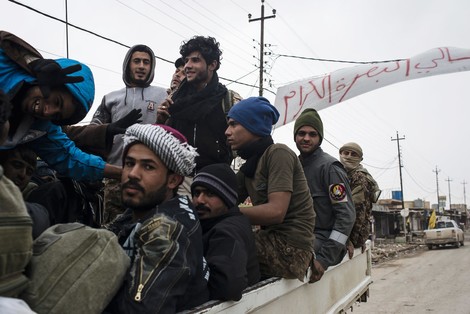Your podcast discovery platform
Curious minds select the most fascinating podcasts from around the world. Discover hand-piqd audio recommendations on your favorite topics.

piqer for: Globalization and politics Global finds
I am an Australian freelance journalist focussing on conflicts, politics, and warzones around the world. I have been working as a journalist for over 5 years, having reported from Australia, Germany, China, Egypt, Palestine, and Ukraine. I am especially interested in the way that new technologies are being used in conflict zones in unexpected and often disturbing ways. During my time working as a journalist, I also co-founded open-source war reporting site Conflict News.
Iran Is Outgunning And Outsmarting The US Across The Middle East
In 2007 the US military was taking hundreds of casualties in an increasingly brutal fight against Iran-sponsored paramilitary groups in Iraq. Now, just 10 years later, the same Shia militant groups, such as Kata'ib Hezbollah and the Badr Organisation fight alongside US advisors and Coalition aircraft in Iraq's most recent spasm of violence – this time against ISIS.
This rather bizarre fact illustrates a much bigger trend at play within much of the Middle East: the rise of the Iran-backed Shia militias. From Lebanon to Syria, Iraq and even remote Yemen, these groups have seized an inordinately large amount of power. That they have managed this stands testament to the careful planning of the Iranian government and the Revolutionary Guards Corps responsible for setting up the vast majority of these groups.
Working on timescales much longer than US presidential administrations, these groups have risen to not just become major military players but also now have a huge political influence too. The US now can no longer fight them with just a military, but now must engage with them on a political level, as evidenced in Iraq. Indeed the success of Iran's militia strategy may, in the long term, be a more serious threat to US influence in the region than any of the Middle East's more headline-grabbing terror groups.
This in-depth investigation by BuzzFeed News details the methods in which these paramilitaries take root in countries, first arriving as a social movement before taking on a more religious, sectarian and finally military dimension. It also points out how despite their massive financial constraints, as well as a language barrier, the Iranians have managed to best the US at training local forces for long-term, protracted war.
